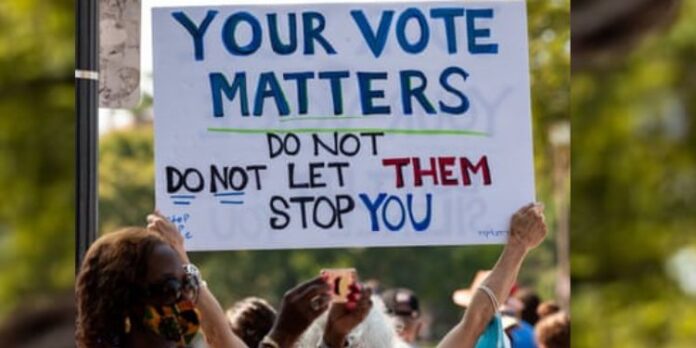Policy Decisions On Voting Rights
As we move ahead, in this important upcoming general election, it is also most important to look back and to reflect on how certain policies, about voting rights were determined and subsequently implemented.
As early as the 1700’s, the right to vote was only afforded to white males, who “were property owners” and probably of a certain age.
Upon the end of the Civil War, the country entered the “Reconstruction Era”, wherein large numbers of formerly enslaved people were voters and enjoyed great political success and power. This period ended, within ten years, when former slave masters were able to take over local county offices and a large number of municipal governments, for their benefit, and thus began the “disenfranchisement” of the black voting power. Locals generally employed “poll taxes and literacy tests” as the means by which formerly enslaved persons, were found to be ineligible to vote. A great amount of these actions were aimed at ignoring the right to vote, afforded black men, by the passage of the 15th Amendment of the U.S.Constitution. As late as the early 1900s, women had not yet been granted the right to vote, which was eventually rectified via the Women’s Suffrage movement.
Fast forward, through the end of World War II, through the Civil Rights movement of the 1960s, we find, in the 1980s, new Think Tanks, such as the Heritage Foundation, conservative groups such as ALEC – the American Legislative Council, whose efforts concentrated on “reducing the number of voters.” One of their principles was known to say “our leverage goes up when the voting populace goes down.”
As a result, of the foregoing, it’s well known now that a significant number of ” Republican – controlled state legislatures” have been openly passing state laws that are designed to reduce the number of people voting.
How is this happening, one might ask?
Well, in 2013, once the Supreme Court ruled the “Section 5 of the 1965 Voting Rights Act” was no longer needed, multiple states began openly implementing laws designed to disenfranchise Blacks, Latinos, Senior Citizens, Women and Students. We’ve seen restrictive Voter ID laws, empowering partisan poll watchers here in Texas, and criminalizing certain duties, as performed by election workers. In other states, it has become a potential crime, to offer water or food, to voters, who are standing in line to cast their votes. There are also efforts, in other locales, that allow “challenges to any voter eligibility”, without justification. In some states unjustified “purges” are occurring, again without justification.
Texas’s SB1, which has been challenged, in federal court, a portion of which was found to be unconstitutional, last fall and the final arguments in the case, were held in February, and that decision is being awaited.
By and large, voters must be sure that their registration is current, which can be checked via Bexar County’s website at HERE.
Advocacy groups remain diligent, in getting more people to “get registered”, as well as to get out and vote.
Change can only be achieved, by disturbing the status quo, and remaining diligent to see that it continues to unfold.
VOTE, You’ll Be Glad You Did!






